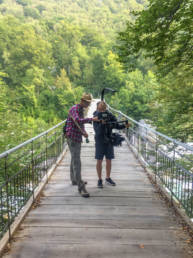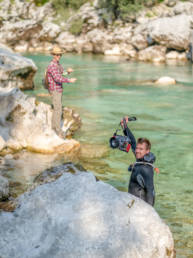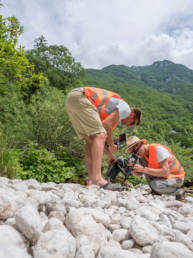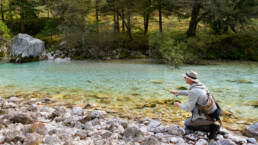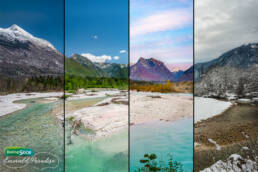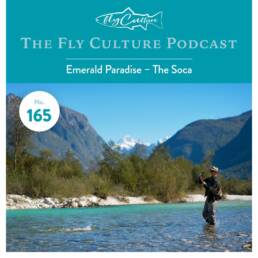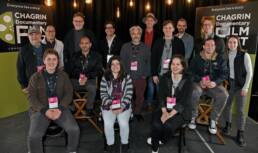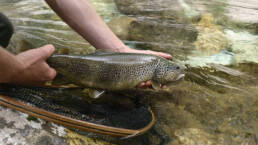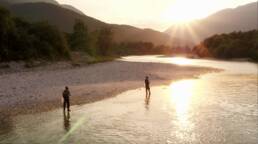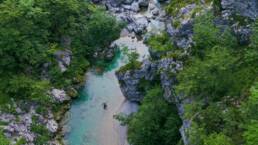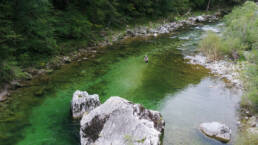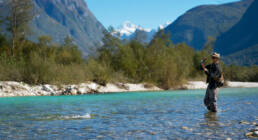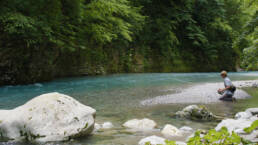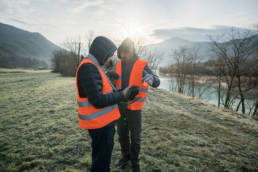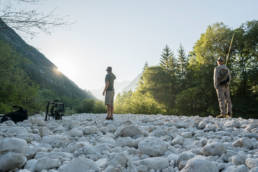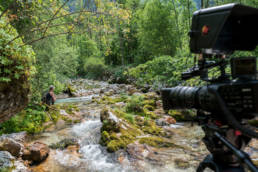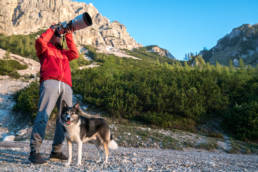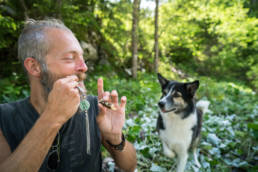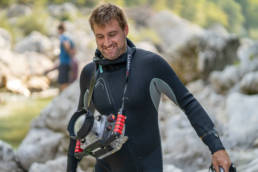
Making of
The making of Emerald Paradise
In 2015 I was able to convince my close friends, talented young photographers and film makers, to join me in Slovenia in order to capture the incredible scenery on videos and photos.
I was especially impressed with the results we got from a 4K (Ultra-HD) camera, and I quickly decided to produce a feature length documentary about fly-fishing on the Soča River in that resolution.
Since this was a new quality level, I was faced with a wide range of problems like data storage, the need for faster computers and connections, more expensive cameras and the fact that higher resolution is only half the ticket to a better picture. HDR (High Dynamic Range) means that we have dark blacks and brighter whites with greater contrast in our shots, making the film you watch as lifelike as currently possible. In addition, filming alone does not cut it. Post-production is extensive, especially for Dolby Surround and HDR color grading. You need a lot of know-how and experience, as well as facilities, like sound and editing studios. I soon realized that I could not take care of this myself.
Step 2
Meanwhile
In 2017, I founded a film production company (BEAUTIFUL ESCPAE MEDIA, filmska produkcija, d.o.o.) in Slovenia in order to build a team there for the production of the Emerald Paradise project, which I have now been envisioning for 15 years. Our budget was minimal, so I was only able to employ Gregor, who first had to learn to fly drones and become licensed to do so.
At that time, drone flights in Slovenia required careful planning and a permit from the national flight agency for every flight. Application for a flight permit required a two-page risk evaluation and a precise flight route created on Google Earth twelve hours before take-off! Additionally, two operators were required, one flying the drone and one to control the camera.
For many scenes, we used multiple cameras simultaneously which involved more people, especially for the transportation of so much equipment. We were lucky to have the support of three very motivated and talented students (Žiga, Klemen and Vanja) and many o thers who volunteer to help us on a part-time basis.
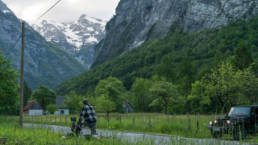
〰
Finally
I successfully applied for co-financing from EU funds, and I was also very lucky to get a substantial loan from a great friend who believes in the Emerald Paradise project. My former editing teacher helped me and did the final cut and prepared the footage for post-production where sound and colors were finished at ARRI Media in Munich, one of the world’s best post-production studios, and the biggest outside of Hollywood.
The biggest difficulties we faced were the unpredictability of nature and wildlife. We had to sit out weeks of rain, and we waited for years for snowfall to shoot vital winter scenes. We waited for murky waters to clear up, only to have bad weather roll in once they finally did. When we aimed for shots of certain very shy animals, we often scared them off while we set up our cameras. Time and again, we carried hundreds of kilos of equipment into steep canyons without paths and had to do what is called canyoning – abseiling down vertical rock sections and waterfalls, wading through ice-cold water – to reach our location. I was a challenge and a continuing adventure, and there is always risk involved: to ourselves and to our expensive gear. Injuries and broken equipment are inevitable.
With all these challenges, my production seemed almost impossible to accomplish at first. Early on, a famous movie producer once told me that even the “Making Of” our documentary would be great content for a feature movie.
Check out our blog or find us on social media for more insights.






